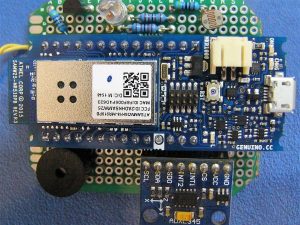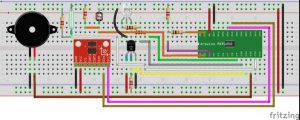Cost and availability of retirement villages cause aging people to stay in their own homes. This system monitors their daily events.
Story
About this project
The aging population of the world presents enormous financial challenges. There are not enough retirement facilities to cater the needs of the elderly and costs are high. The tendency is that elderly people prefer staying in their own homes for longer. That makes the elderly more independent and happier, but risks are higher when they fall or experience health or security problems. Sometimes that is only discovered hours or days after the incident.
With this non-invasive system daily events can be monitored and recorded and a set of rules can be applied to generate an alarm condition. This includes:
- opening and closing doors
- switching lights on or off
- using electrical appliances
- movement in various locations in the house
- temperature measurement
- panic button
- fall detection (monitor worn by elderly)
A summary of this information will be sent to the cloud. With the monitor app users with access to the service will be able to monitor various statuses and will be alerted of emergency situations. These users may include family, friends, emergency services and health services.
Infrastructure Needed to Provide the Service:
- one or more wifi sensor nodes to collect relevant data
- wifi network infrastructure
- data cloud storage and service infrastructure
- client app to display cloud collected data and control sensor nodes via the cloud
A number of different sensors are used to accumulate data for a rules based system, which will send alerts when events do not follow a normal pattern. These include, but are not restricted to:
- a) accelerometer – vibration (eg. fridge running), orientation or fall detection (where the device is worn by the person), objects being moved (sensor device attached to the object)
- b) light sensor – to determine whether lights are on and/or sun is shining (curtains drawn of not)
- c) temperature – to measure room temperature (too hot or too cold)
- d) magnetic switch OR motion monitor contact – to determine when a door is opened or closed (when not supposed to) OR lack thereof (which may be an abnormal condition) OR lack of motion (for a period of time in a specific time slot)
All these events are time stamped, so that rules can include time of day, time slots and time span.
A bi-color LED and buzzer is used to communicate remote messages and as local alarm when the internet is not available. Messages may include reminders like medication, time to feed the cat, time for a meal, etc.
The assumption is that a wifi router, which is connected to the internet, will be available. The wifi sensor node makes use of DHCP to obtain an IP address.
Cloud Environment
The wifi sensor node currently makes use of a free subscription to the Microsoft Azure IoT Hub to store data. Setup and tools will be described in the software section.
As a proof of concept I used the Azure Device Monitor software to analyze data and to send commands to my MKR1000 sensor node via Azure IoT Hub.
I also installed the Azure IoT Suite and had a look at their example application (more under software).
In future a Windows 10 app will be used to display data (light level, temperature) and alerts (fall, door open) from Azure IoT Hub and to send signal commands to wifi sensor nodes via the hub.


